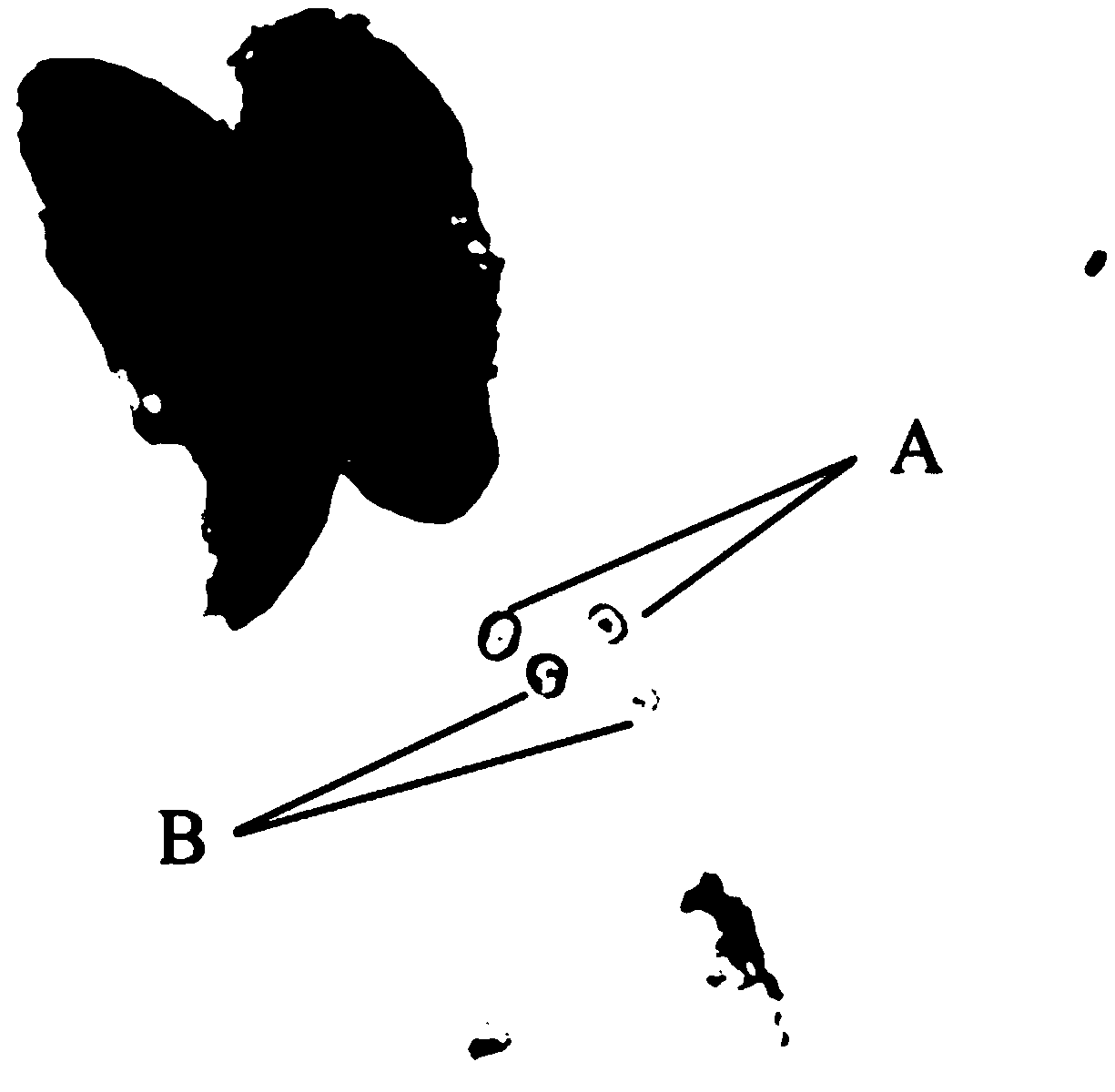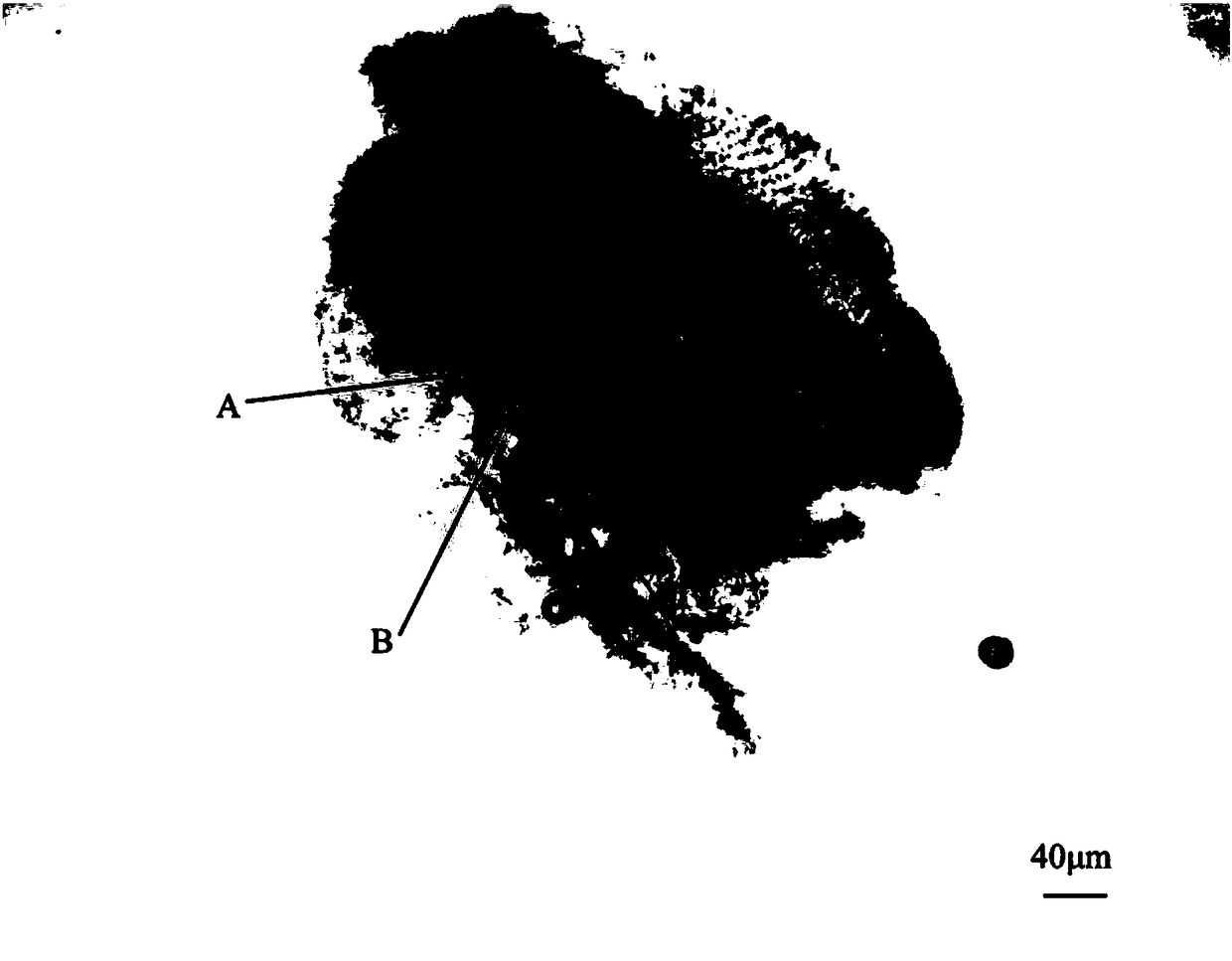A method for preparing fish early life history otolith samples
A sample preparation and life history technology, applied in the field of biological specimen preparation, can solve problems such as difficult long-term preservation, difficulty in removing otoliths, unclean specimens, etc., and achieve the effect of reducing difficulty
- Summary
- Abstract
- Description
- Claims
- Application Information
AI Technical Summary
Problems solved by technology
Method used
Image
Examples
Embodiment 1
[0065] A method for preparing fish early life history otolith samples, comprising the following steps:
[0066] S11. Place a fish sample in an early life history under a dissecting mirror or a stereomicroscope, and drop a corrosive solution onto the fish sample to expose otoliths; the corrosive solution is weak acid, weak base or strong base salt solution;
[0067] S12. Clean the exposed otoliths with purified water for several times, and at the same time absorb the cleaned liquid and / or tissue residue;
[0068] S13. After the otoliths are dried at room temperature, embed the otoliths with a mounting agent, and dry the otoliths after they are flattened.
Embodiment 2
[0070] A method for preparing a transparent embryonic or larval otolith sample, comprising the following steps:
[0071] S21. Put the fresh yellow-covered plaice in the center of the glass slide, place it under a dissecting mirror or a stereo microscope, and adjust the magnification to an appropriate field of view.
[0072] S22. Acquisition and cleaning of otoliths
[0073] Add 5.5% sodium hypochlorite solution dropwise to the fish body to immerse the fish body in the solution. If the tissue dissolves too quickly, add purified water to dilute it appropriately, so as to dissolve the fish body tissue at an appropriate and controllable dissolution rate;
[0074] When the otoliths are clearly visible, wash them with purified water 3 to 4 times, and use filter paper to absorb the surrounding liquid each time. When the solution dissolves the otoliths and the area around them is clean and transparent, wash them with purified water, leaving the remaining fish body as a reference for ...
Embodiment 3
[0078] A method for preparing an opaque embryonic or larval otolith sample, comprising the following steps:
[0079] S31. Put the fresh sample of pufferfish larvae in the center of the glass slide, place it under a dissecting mirror or a stereo microscope, and adjust the magnification to an appropriate field of view.
[0080] S32. Acquisition and cleaning of otoliths
[0081] Add a sodium hypochlorite solution with a concentration of 6.5% to the fish body to immerse the fish body in the solution. If the tissue dissolves too quickly, add purified water to dilute it appropriately so as to dissolve the fish body tissue at an appropriate and controllable dissolution rate; Redfin pufferfish larvae in process such as figure 2 shown;
[0082] When the otoliths are clearly visible, wash them with purified water 3 to 4 times, and use filter paper to absorb the surrounding liquid each time. When the solution dissolves the otoliths and the area around them is clean and transparent, w...
PUM
| Property | Measurement | Unit |
|---|---|---|
| diameter | aaaaa | aaaaa |
| diameter | aaaaa | aaaaa |
Abstract
Description
Claims
Application Information
 Login to View More
Login to View More - R&D
- Intellectual Property
- Life Sciences
- Materials
- Tech Scout
- Unparalleled Data Quality
- Higher Quality Content
- 60% Fewer Hallucinations
Browse by: Latest US Patents, China's latest patents, Technical Efficacy Thesaurus, Application Domain, Technology Topic, Popular Technical Reports.
© 2025 PatSnap. All rights reserved.Legal|Privacy policy|Modern Slavery Act Transparency Statement|Sitemap|About US| Contact US: help@patsnap.com



